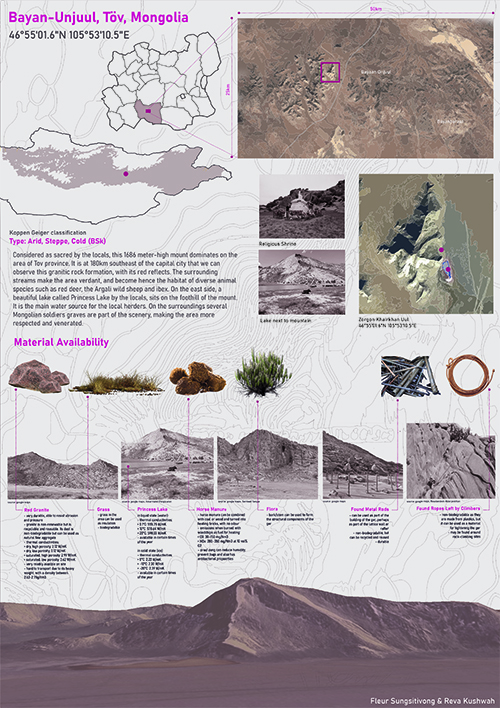

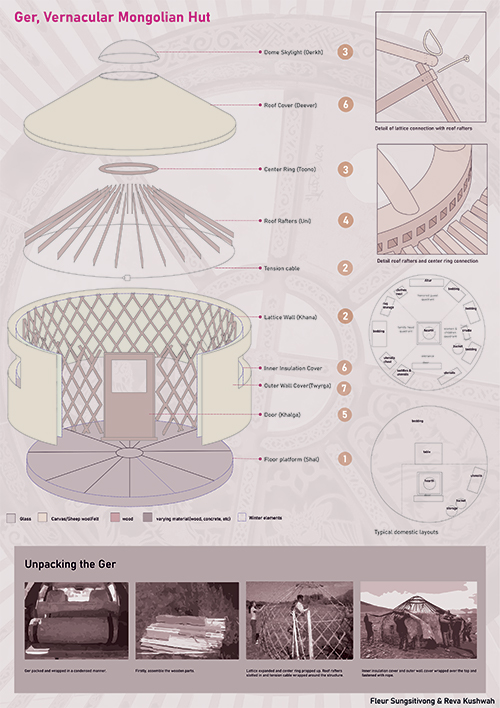


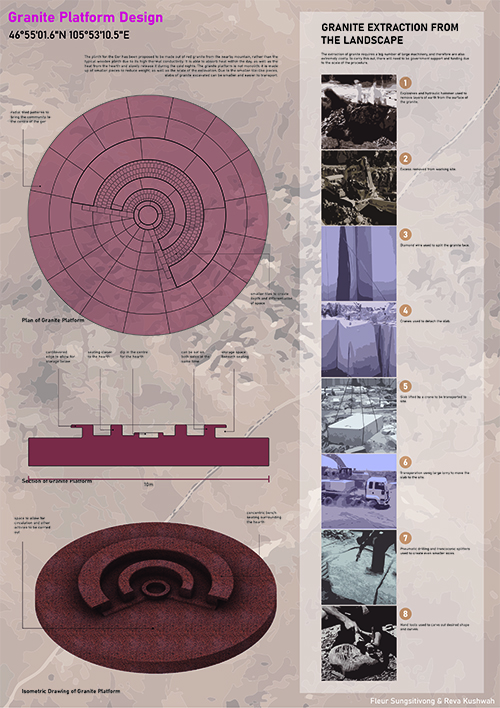
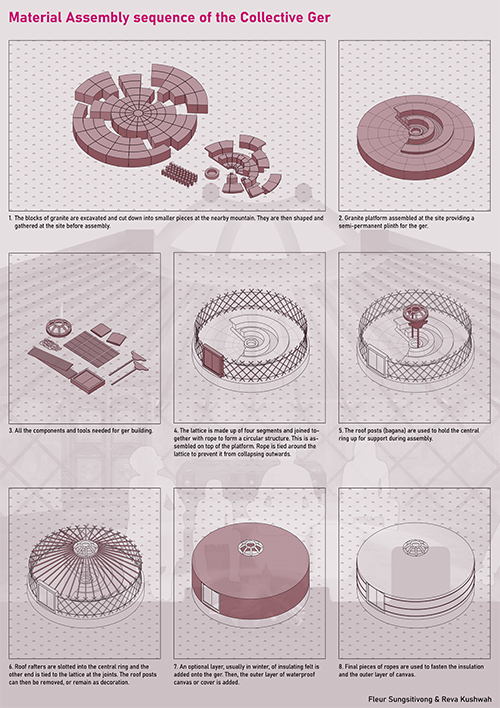
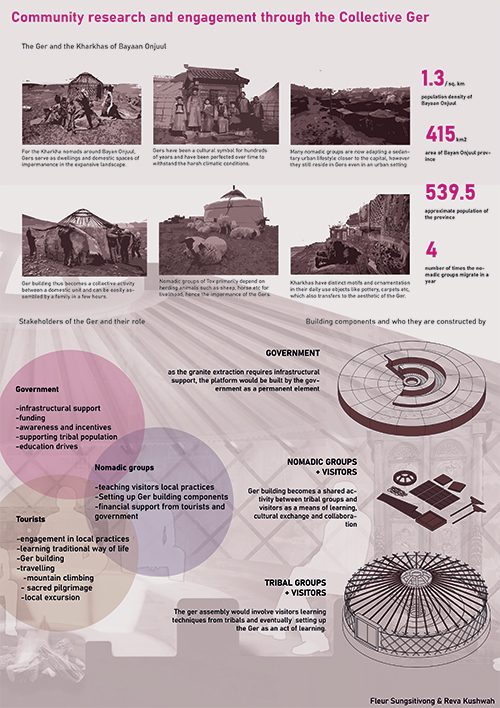








the idea is for people to centre around the hearth, and collect building materials for making the next temporary Ger during their pilgrimage, as well as assemble/ make different ger components, like weaving the wooden lattice for the gers.
The space of congregation also becomes a space for nomadic tribes and travellers to engage in conversation, collaborate and contemplate.
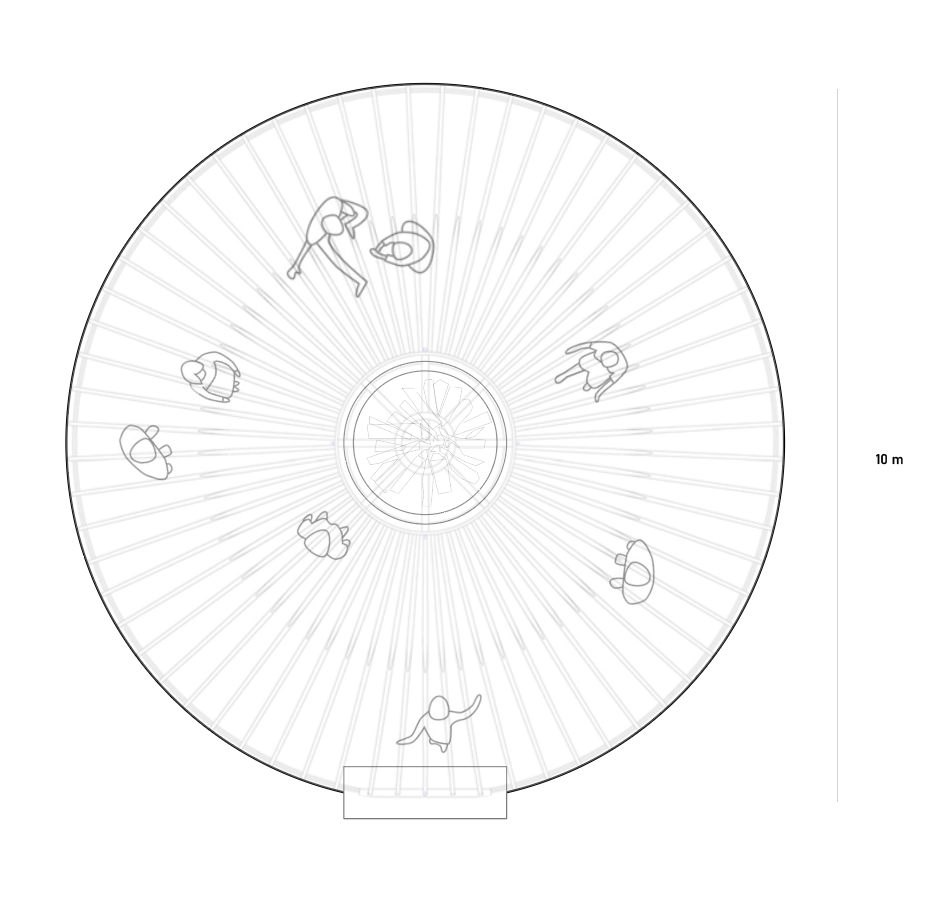

Resistance:
An implementation of a semi-permanent structure at a location where there is not already any existing permanent buildings may cause disagreement with locals.
The adaptation of the ger to become more permanent by infilling lattice with adobe may be disagreed with.
The use of granite may be challenging due to the limited machinery.
Purpose:
This contemplative space can be used as a gathering area for spiritual practice between locals and visitors.
The area can also be transformed into a hub for education, as well as where locals can teach their craftsmanship to any visitors.
What can we learn:
Perhaps this semi-permanent contemplation space does not need to have “permanence”, but celebrate the value of temporariness and the local nomadic lifestyle.
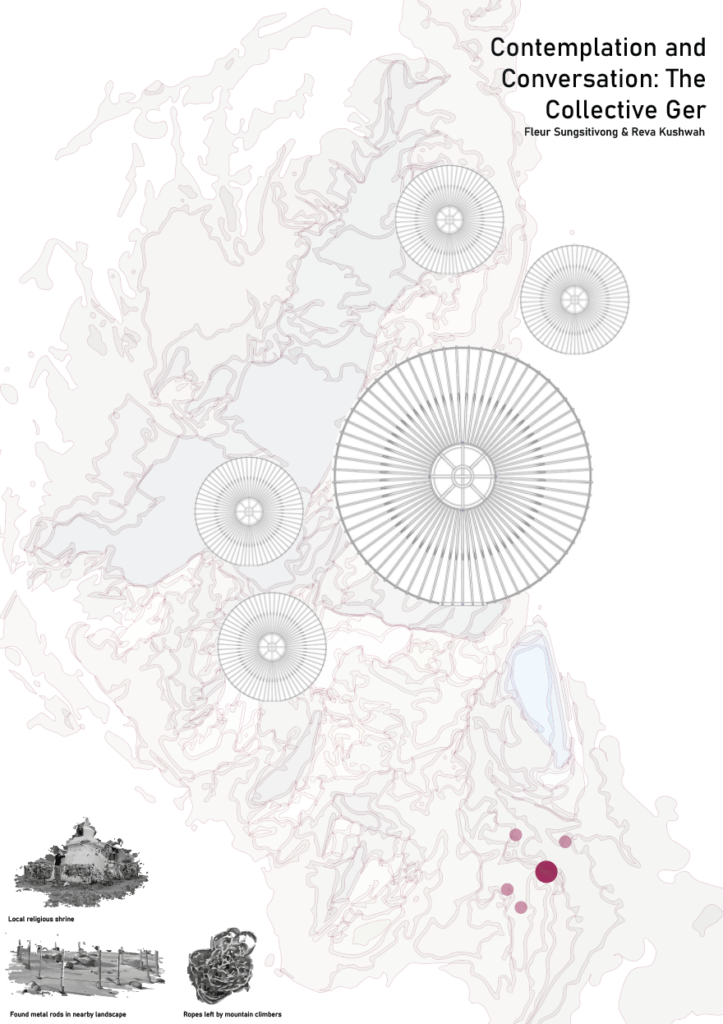

Base – the base is made up of granite piles, extracted from the nearby mountain and cylindrical shapes carved out to allow the found metal rods to slot in.
(not shown) platform – will be made of manure mixed with dry grass and weeds
(not shown) lattice/wall structure – the lattice will be made from wood collected from the nearest forest area (approx 1.5hours on foot). A mixture of manure and dry grass (adobe) will be used to infill the lattice to create a more permanent structure and increase the insulation. Optionally, in winter, a sheet of canvas or animal skin will be placed over the structure as an extra later of insulation.
(not shown) rope – ropes left by rock climbers will be used to tighten the walls further, preventing it from opening outwards. Additionally, it will also be used to connect the pieces of wood for the lattice.
roof structure TBC

This Mongolian yurt is in Hooke Park! It was a second hand purchase from a man who used it to travel around Mongolia for 15 years. It takes 2 people to put up the structure in 1 hour, and another 1-2 hours for the canvas cover.
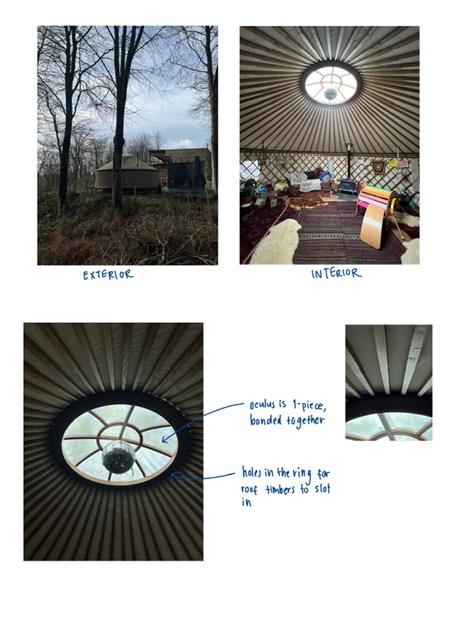

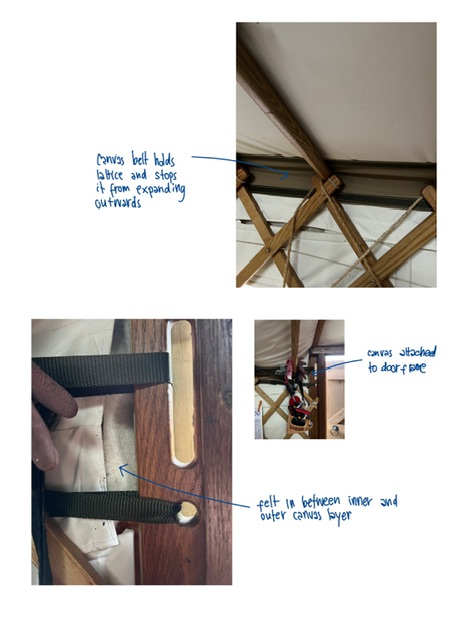



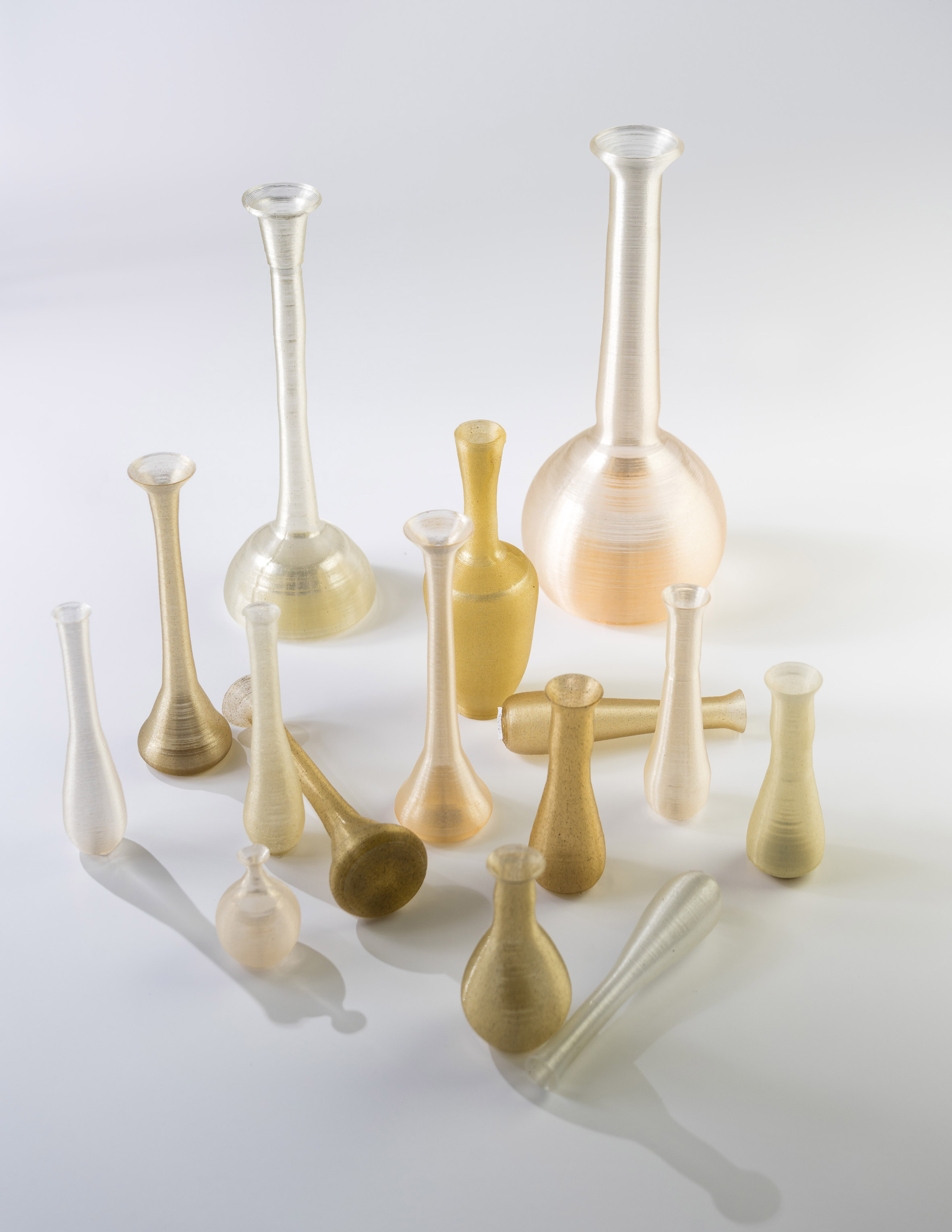
Having been presented with a range of materials and how they can be modified/processed for building and construction uses, it is interesting to think as to how vernacular techniques of using natural materials can be combined with contemporary material processes to harness the best use of various plant and earth materials. A good example of such innovation has been biological 3d printing with algae by Maartje Dros to produce baskets and vessels based on traditional forms. This highlights an innovative use of unorthodox plant materials along with modern industrial technology.
It is also useful to learn of the thermal conductivity and performance of various plant and earth materials and to corelate it with their practical use in real life situations- plant materials are used more as insulation due to their lower thermal conductivity. It is also useful to note that the porosity of a material corelates to its thermal conductivity.
Finally, I am also reminded of the contrast of vernacular/industrial fabrication methods. While vernacular groups are highly skilled in processes such as weaving etc, it would be complex to replicate such a process in a machinic industrial way. Similarly, the accuracy achieved by industrial processes such as 3d printing cannot be achieved as economically and efficiently if using manual labour processes.

This project proposes a design for community intervention, based on vernacular architecture in Bayan-O’njuul, Töv, Mongolia [46°55’01.6″N 105°53’10.5″E]. The site is located within the dry steppe, cold arid [BSk] which has a very extreme seasonal and daily temperature ranges, with low and irregular precipitation.The specific area of interest within the site region is the Zorgol Khairkhan mountain, which is a sacred mountain next to the Princess Lake.
Within this proposal, there will be a focus on how a community may be built with a shared sensibility in an isolated landscape with very few permanent inhabitants and lack of materials. This project will attempt to suggest a solution by proposing an alternate design system of adapted vernacular building. Tourists and participants of the pilgrimage are involved in the act of building this new 20-people contemplation space by bringing found or local materials as part of their ritual. The space will engage in traditional practices rooted within the landscape, and invites people to move away from permanence and excess and engage in the local form of shared nomadic living.